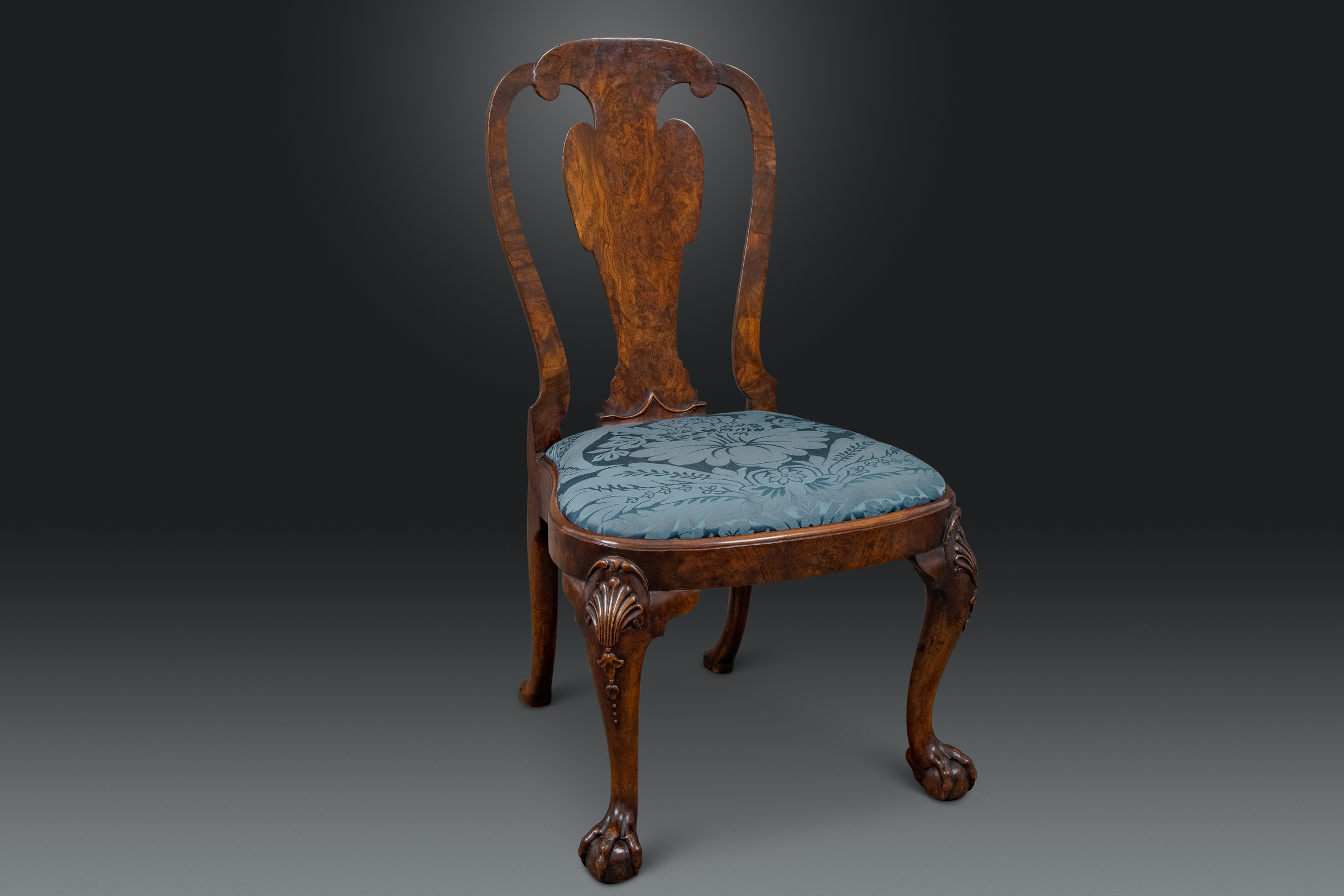


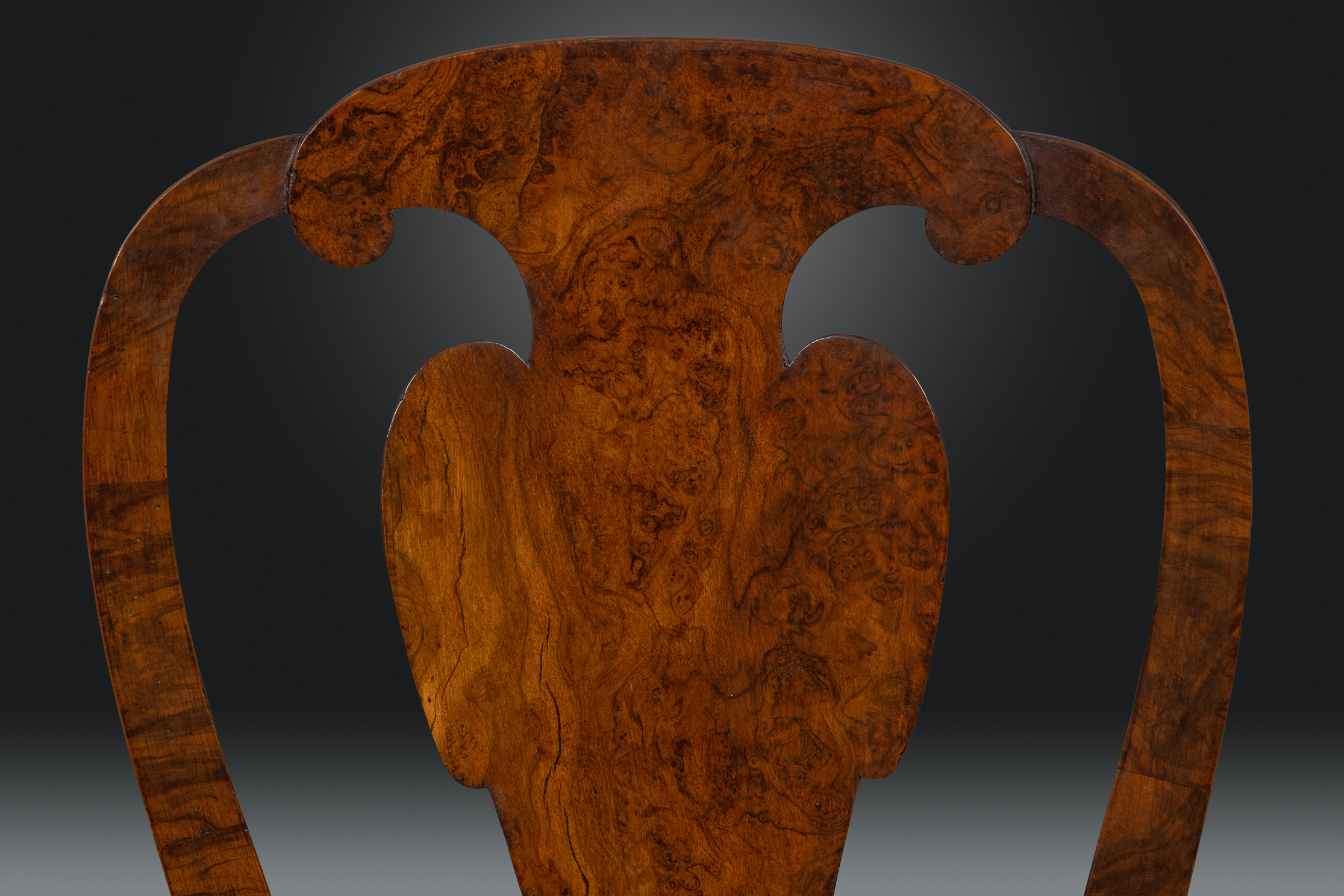
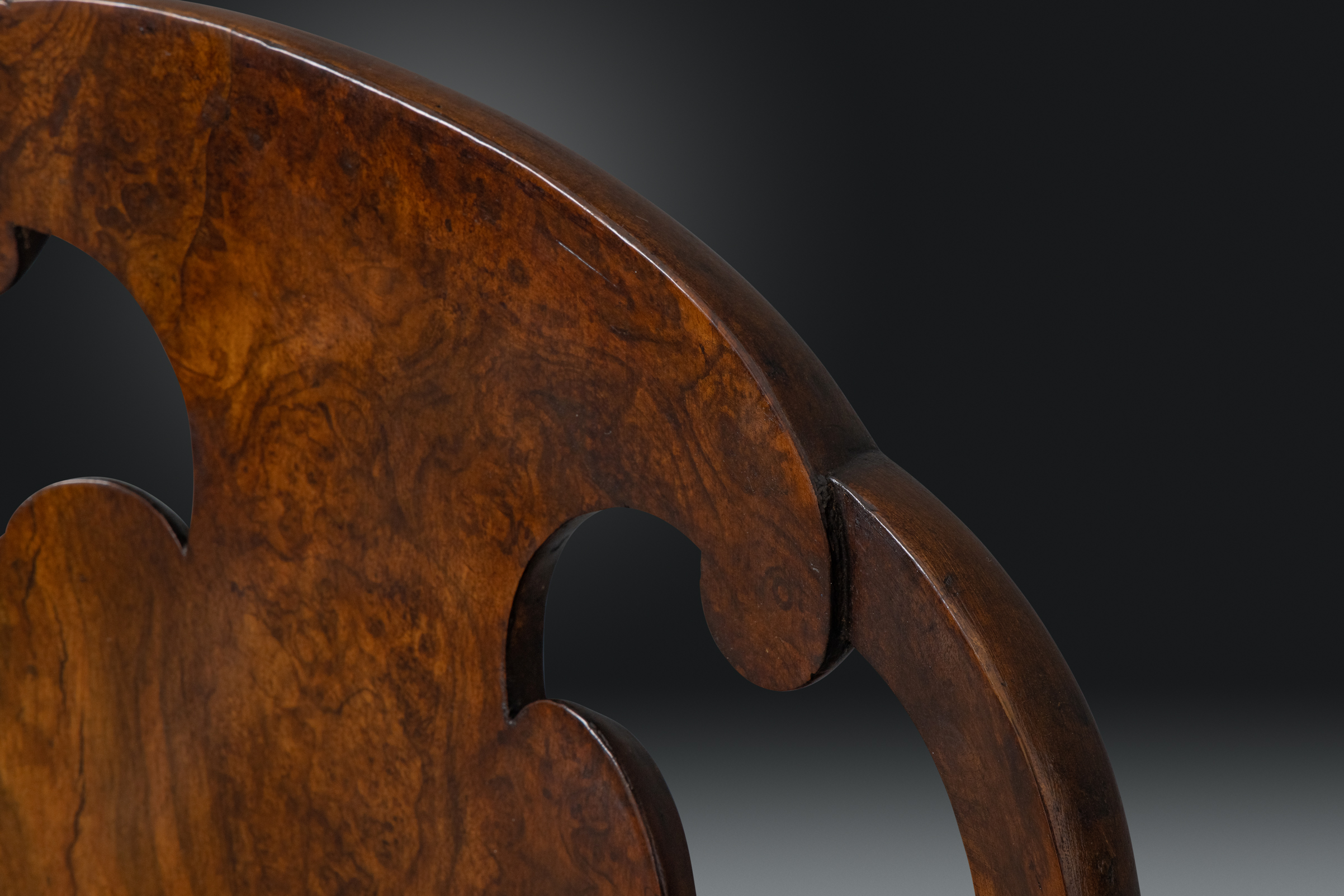


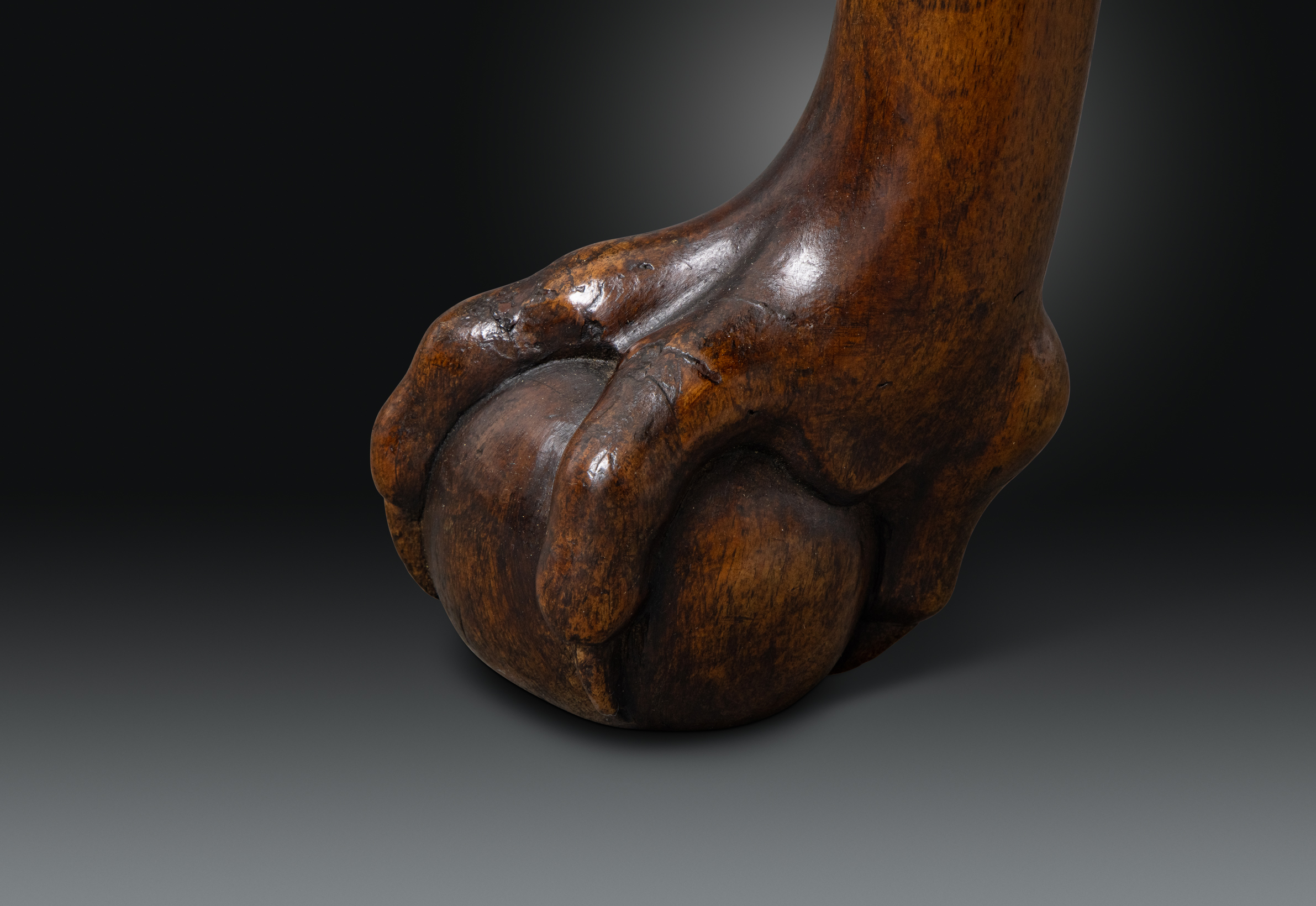

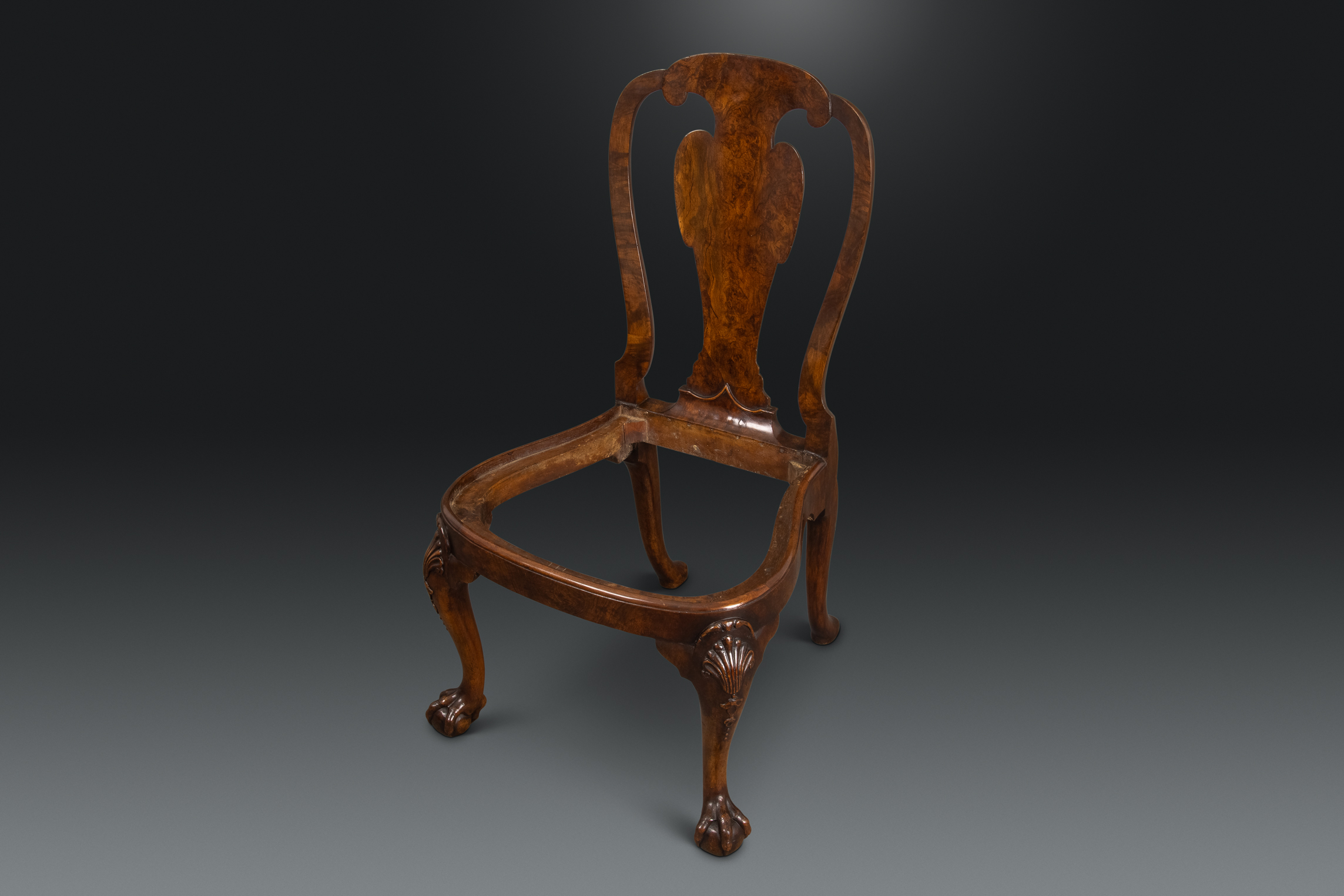
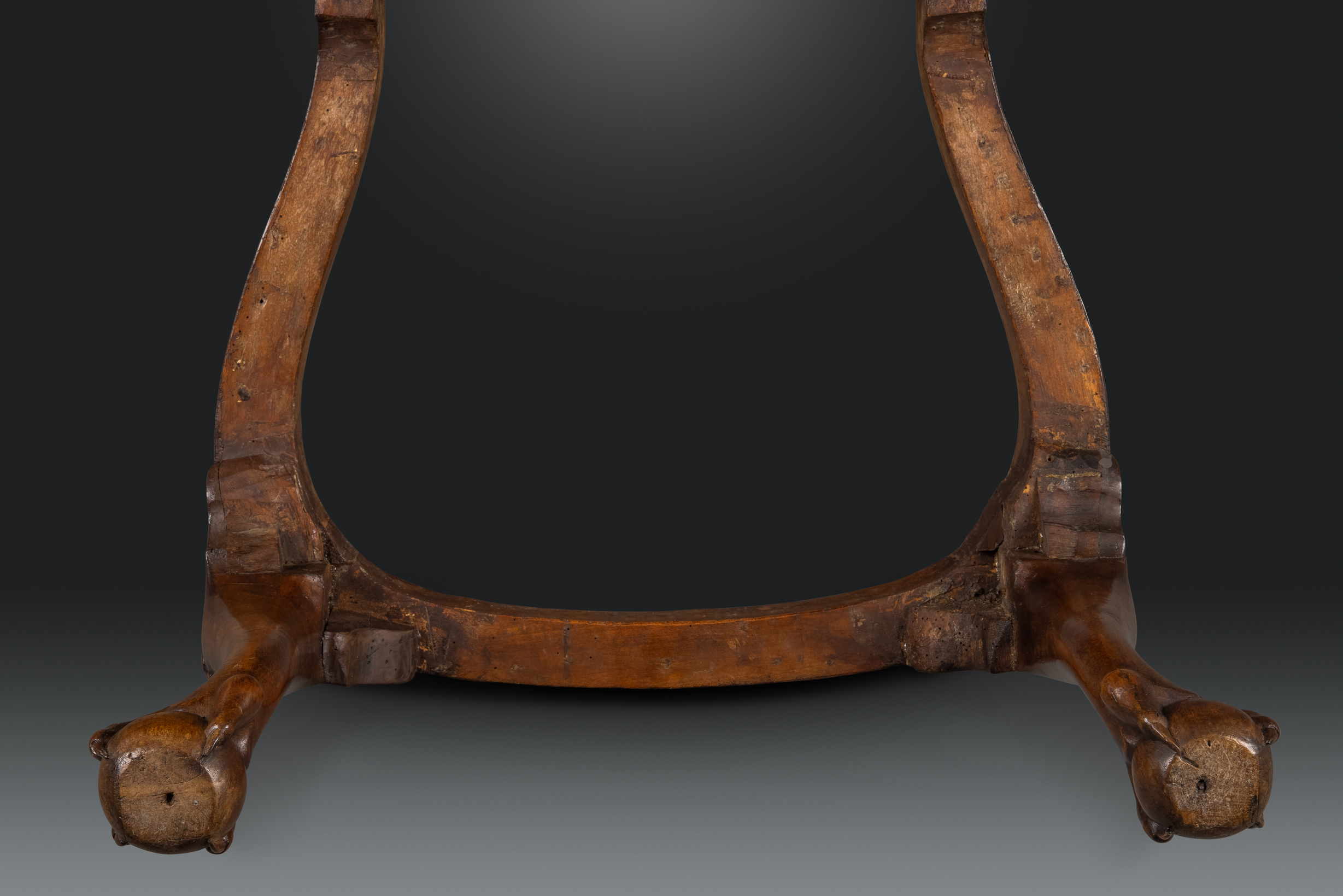
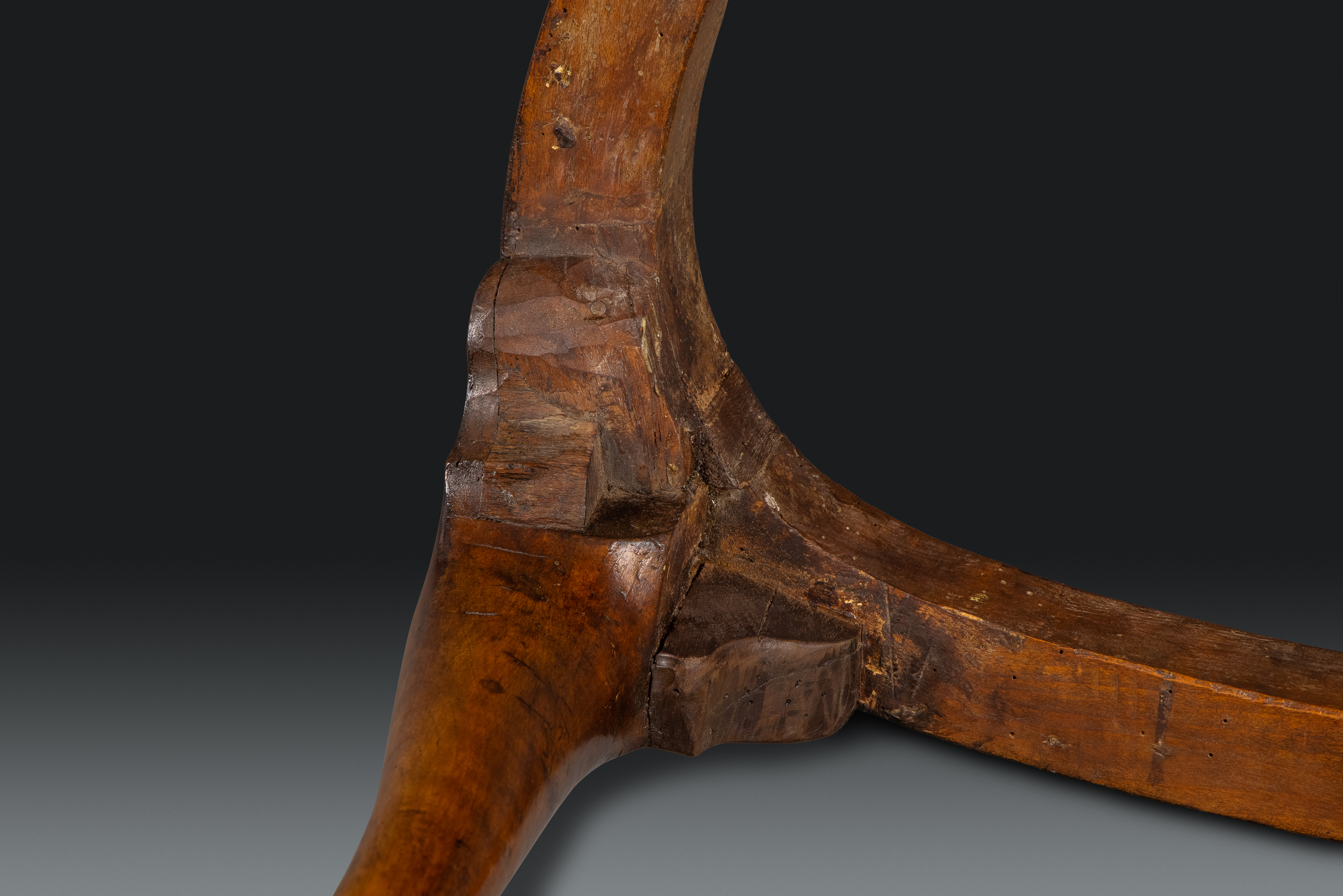
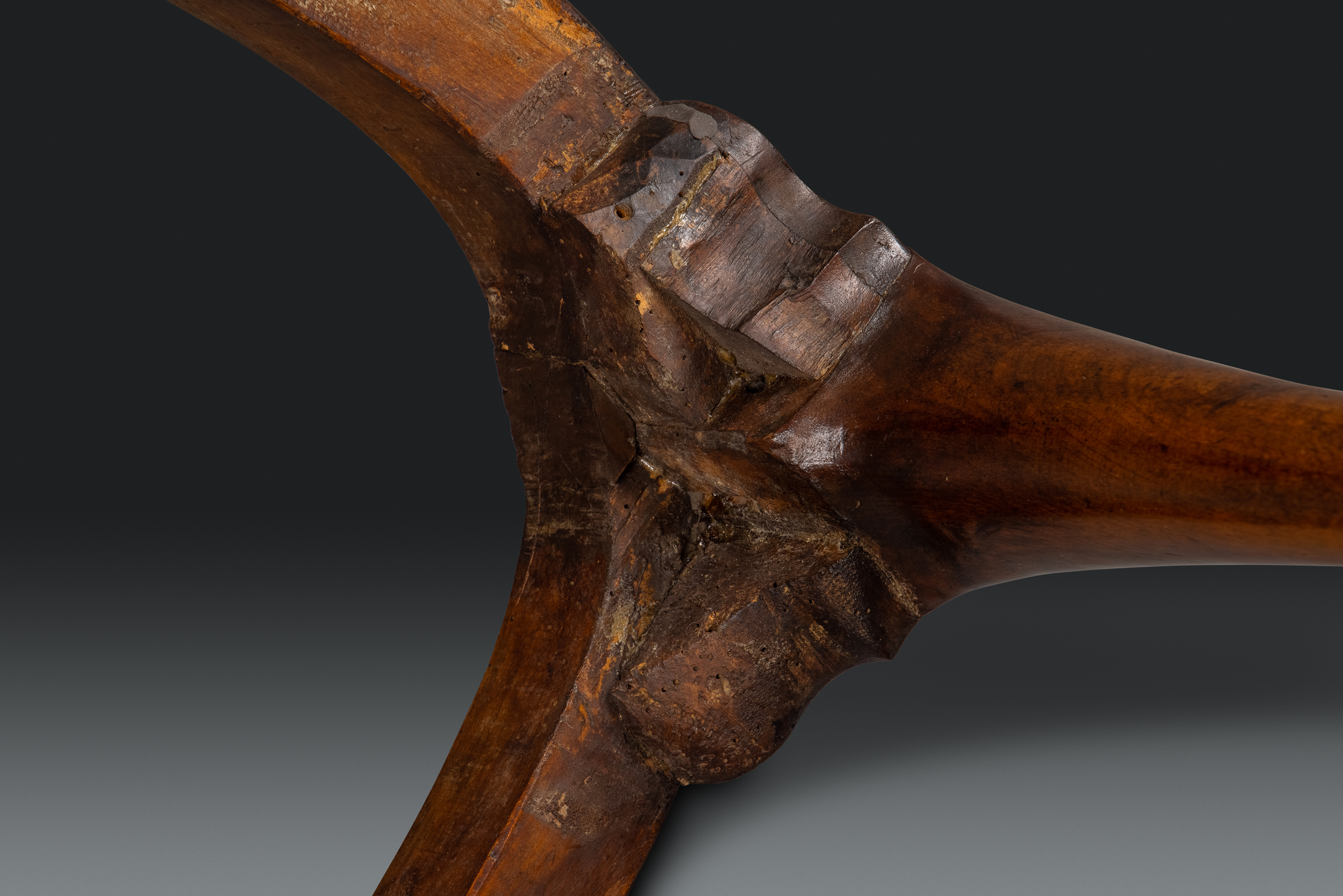
$0.00
For questions regarding viewing, shipping, and anything else,
contact us at: [email protected]
With a shaped back enclosing a vase-form solid splat and above a well formed drop-in seat on hipped cabriole legs headed by shells and trailing bell flowers and terminating in well defined carved ball and claw feet. The back rail stamped twice “R.W.”
This chair is identical in form to a number of chairs offered by Christies in the past two decades and very closely related to labeled groups in the Carnegie Museum of Art, Pittsburgh and others illustrated in Edwards, The Dictionary of English Furniture, 1954 and Gilbert, Pictorial Dictionary of Marked London Furniture 1700-1840.
It is a tour-de force of design and execution, common to much of the output of the Grendey workshops. The veneers are exceptionally well chosen and the back splat veneer is laid on solid walnut — an unusual and expensive addition. What strikes one about the chair is the attention to detail unseen in much of the output of competitors.
An interesting note is the stamp appearing on back-rail twice, RW. Much of Grendy’s output, particularly chairs, are stamped with initials and much is not. This is similar to the output of the Gillows workshop, and some of the Thames Valley Windsor chair producers. All these makers were very successful and orders at times well exceeded the capacity of the home workshops. Susan Stuart has studied the distribution of work for the Gillows factory and concluded that the stamping of initials by journeymen working far from the central workshop was a means of identifying pieces for payment, and that is probably to case with Grendey chairs.
What is remarkable, however, is the consistency of quality of Grendey’s work despite multiple journeymen working on a set of chairs, leading one to infer that multiple workmen may have constructed the items, but the final carving and finishing, and maybe even veneering was left to the craftsmen at the main workshops in Clerkenwell, London. This chair is well worth viewing and we have included a short video on our website that you may enjoy.
By Giles Grendey, London c. 1735